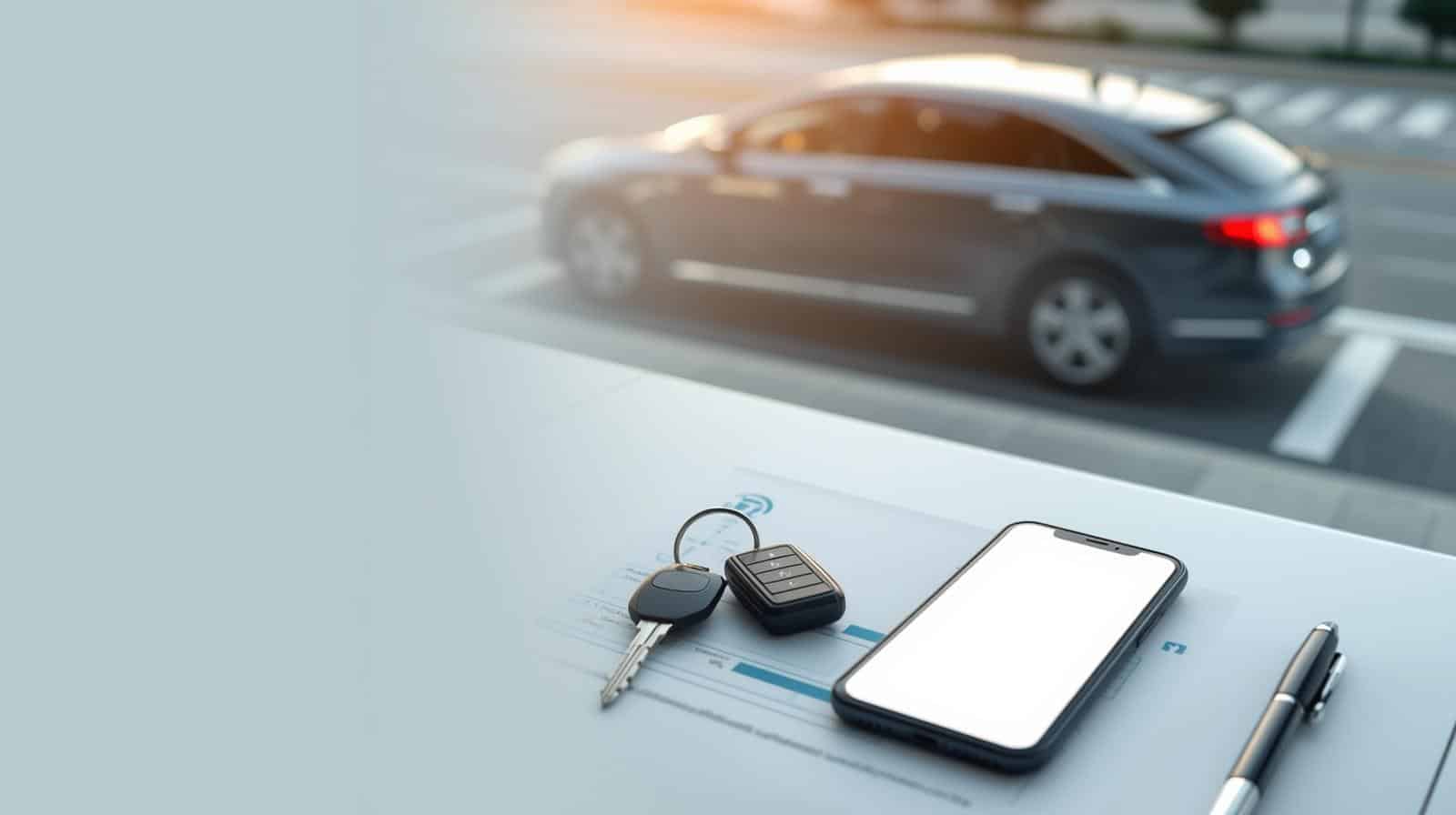You can sell a vehicle that is financed – you just have to line up the payoff, the buyer’s funds, and the title release. Lenders hold a lien until the balance is cleared, so the transfer must run through them. Use the steps below to calculate equity, choose the safest payment flow, and finish the paperwork without delays in either the US or Canada.
Understanding your loan payoff amount
Before you list the car, request a written payoff quote from your lender. It should include a 10-day (or lender-specified) payoff and the per-diem interest—the daily interest added if closing slips a few days. If the deal takes longer than expected, ask for an updated quote so you don’t underpay.

Most lenders provide payoff quotes in their online portals or by phone. Keep the letter handy; buyers and dealers will ask for it when they line up payment.
Read: Used Commercial Truck Financing in Canada
Calculating your equity position
Your equity is the gap between the car’s value and what you owe.
- Equity = Expected sale price − Payoff.
- Positive equity: you keep the difference (minus any fees).
- Negative equity: you bring cash to close or consider other options.
Check value using multiple sources: a pricing guide (e.g., KBB/Edmunds), local listings for similar year/trim/mileage, and any recent offers from dealers or online buyers. Private-party prices are often higher than trade-in values, but private sales require more coordination.
Quick example:
- Payoff: $17,800
- Private buyer offer: $19,500 → $1,700 positive equity
- Dealer offer: $16,000 → $1,800 negative equity
Step-by-step process for selling with a loan
Step 1: Call your lender for release procedures
Ask: where to send funds (wire/instructions), whether they allow a same-day branch closing, what documents they’ll issue (lien release, title or e-title confirmation), and how long release typically takes.
Step 2: Price and disclose
Price the car to cover your payoff and any selling costs. In your listing, state that a lien exists and explain your plan (e.g., “payment goes to lender; we’ll meet at the bank for title release paperwork”). Clear disclosure builds trust.
Step 3: Screen buyers and verify funds
Ask serious buyers for a cashier’s cheque, wire, or proof of loan approval before a test drive. Never accept a personal cheque. To avoid cheque scams, meet at the buyer’s bank or use a wire; confirm with your lender before handing over keys.
Step 4: Choose the safest payment method
- Option A: Buyer pays lender directly. Buyer wires or brings a bank draft to the lienholder. If your sale price exceeds payoff, the buyer pays you the difference. Safest for both parties.
- Option B: You accept full payment, then pay off. Possible, but buyers must trust you to forward the title once the lender releases it.
- **Option C: Use an escrow service. A neutral third party holds funds, pays the lien, receives the title, and releases the balance to you. Escrow adds a fee but increases protection.
Step 5: Prepare the documents
Have these ready:
- Government ID (buyer and seller)
- Payoff letter with wiring details
- Title/registration (or lender’s electronic title reference)
- Bill of sale with VIN, price, date, and signatures
- Odometer disclosure (where required)
- Maintenance records and a recent vehicle history report
Step 6: Mind the title timing
Expect the title or lien release within roughly 2–6 weeks after payoff, depending on the lender and your DMV/registry. To keep everyone comfortable, write a simple agreement that you’ll deliver the clear title within 30 days. Some states and provinces allow registration using a bill of sale plus a lien-release letter while the physical title is in the mail.
Special considerations: US vs Canada
United States
- Title and transfer steps vary by state. Many states support electronic titles and by-mail processing.
- California generally requires a valid smog certificate for most private-party sales; check exceptions.
- Texas updated inspection rules in 2025; requirements now differ by county and vehicle type—confirm with TxDMV/Texas DPS.
- Florida currently has no emissions testing for private vehicles. Always check your DMV for current forms and notarization rules.
Canada
- Liens are recorded at the provincial level (PPSA). Buyers often request a lien search before paying.
- Ontario: private sellers typically provide a Used Vehicle Information Package (UVIP) (fee applies).
- Quebec: transfers run through SAAQ; inspections can be required in specific cases (e.g., rebuilt or out-of-province vehicles).
- British Columbia: buyers usually pay PST at ICBC when registering.
Check your province’s current forms and timelines before meeting the buyer.
Handling negative equity (upside-down)
If the payoff exceeds the sale price, your lender won’t release the title until all funds arrive. Options:
- Bring cash to closing to cover the shortfall.
- Make extra principal payments and wait until you reach positive equity.
- Refinance to reduce interest and accelerate principal (only if costs make sense).
- Trade the car to a dealer who will roll the negative equity into a new loan (convenient but increases your debt—use sparingly).
Never sell the car and skip the shortfall. The lender will still pursue the balance and it can damage your credit.
Working with different buyer types
- Private buyers: Highest potential price; you manage payoff and paperwork. Meet at your bank or the buyer’s bank for safety.
- Dealerships/trade-ins: Fastest path; they pay the lender and handle the title. Offers are usually lower than private-party value.
- Online buyers (national services): Quick appraisals and lender payoff handling; prices often land between private-party and dealer trade-in.
FAQ:
Can you sell a financed vehicle to a private buyer?
Yes. Coordinate the payoff with your lender, accept secure funds (wire/cashier’s cheque), and have the lender issue a lien release. The buyer can register once the lien is cleared.
How do I sell a car that has a loan if I’m upside-down?
Bring cash to cover the gap, wait and pay down more principal, or consider a dealer trade that rolls the shortfall into the next loan (higher debt—be careful).
Can I sell my financed car back to the dealership?
Yes. Dealers routinely appraise, pay your lender, and process the title. If their offer is below your payoff, you’ll need to cover the difference or roll it into your next loan.
Can you trade in a car that is being financed?
Yes. The dealer subtracts your payoff from the trade value. Positive equity lowers your new price; negative equity may be added to the new loan.
Do I pay sales tax when I sell my financed car?
Sellers generally don’t pay sales tax on private sales. Buyers pay applicable state/provincial taxes at registration. Check local rules for any exceptions.
Key takeaways:
- Get a written payoff with per-diem interest and keep it current.
- Calculate equity first; plan for any shortfall before you accept an offer.
- Use secure payment (wire/cashier’s cheque); avoid personal cheques and meet at a bank when possible.
- Expect 2–6 weeks for title or lien release after payoff; document the delivery timeline.
- Follow your state/province rules (DMV/registry), and bring a complete paperwork package to avoid delays.









